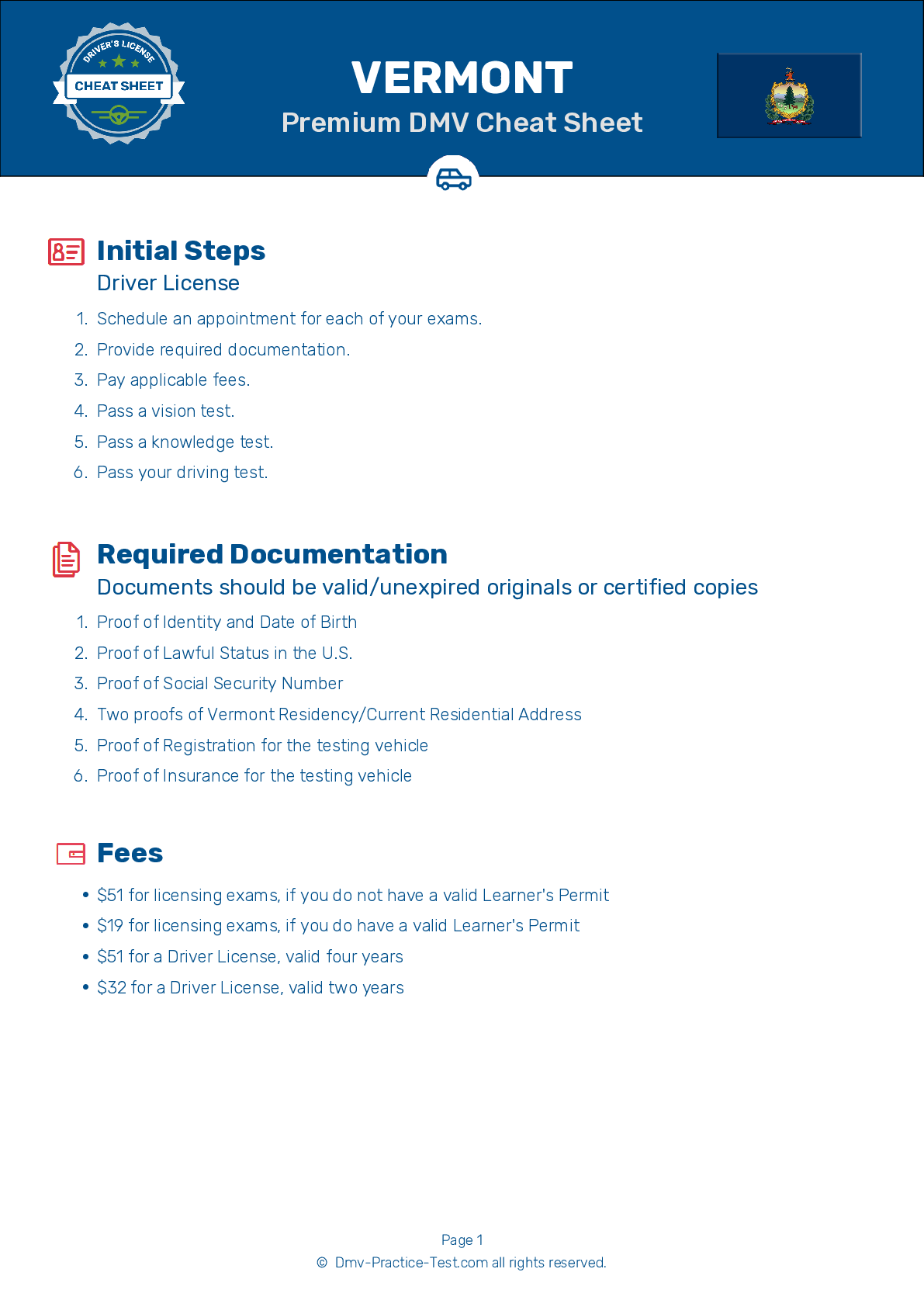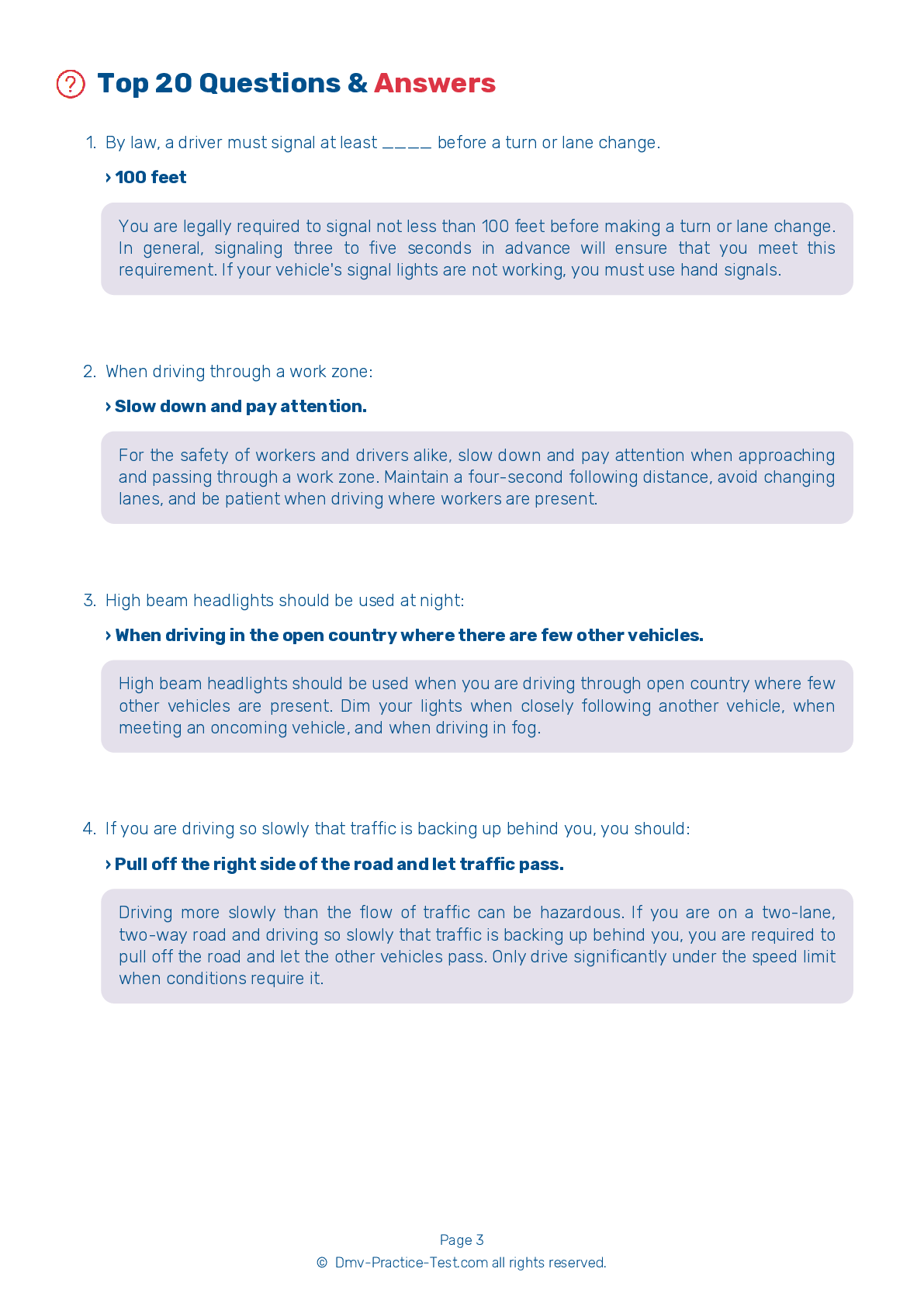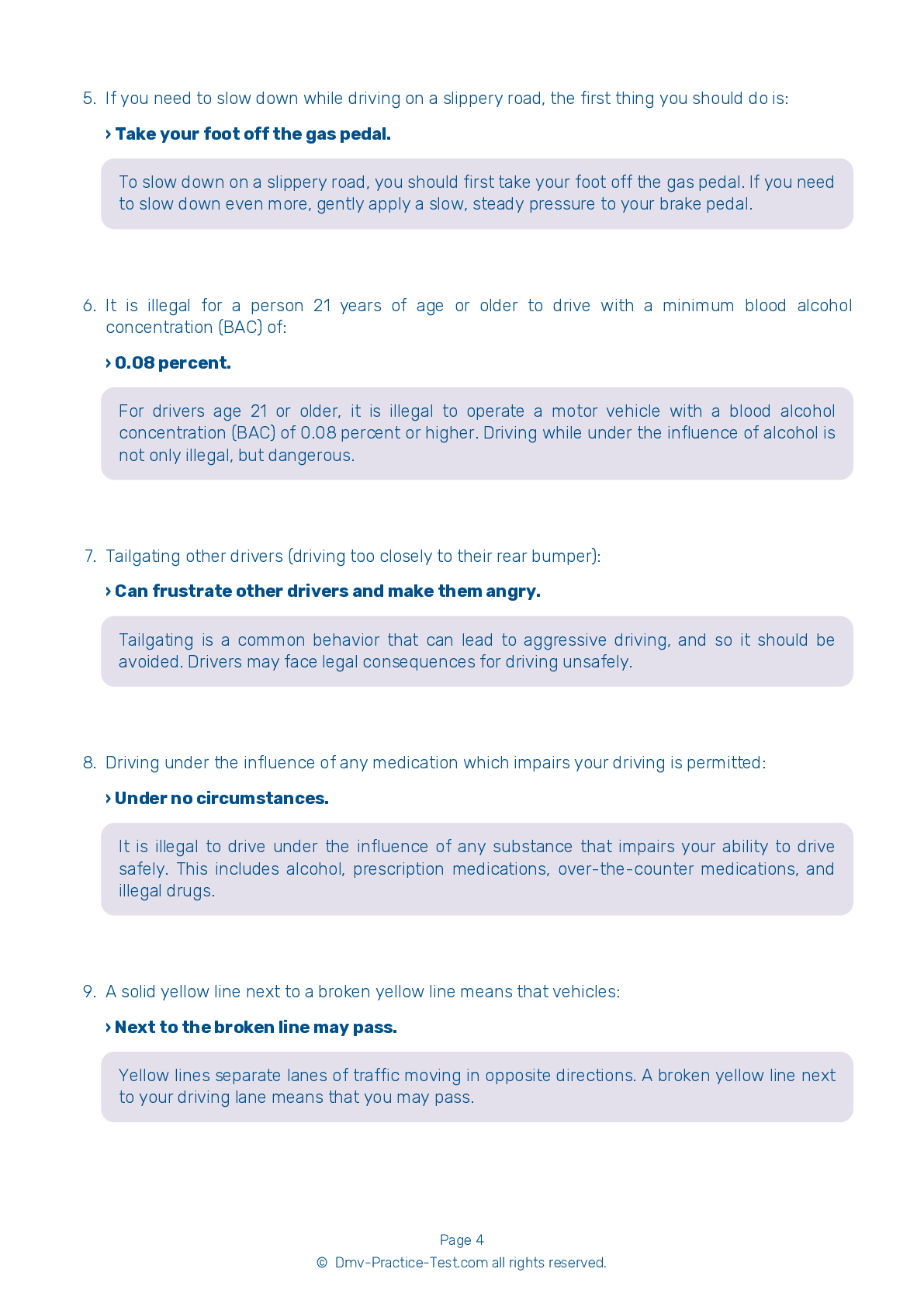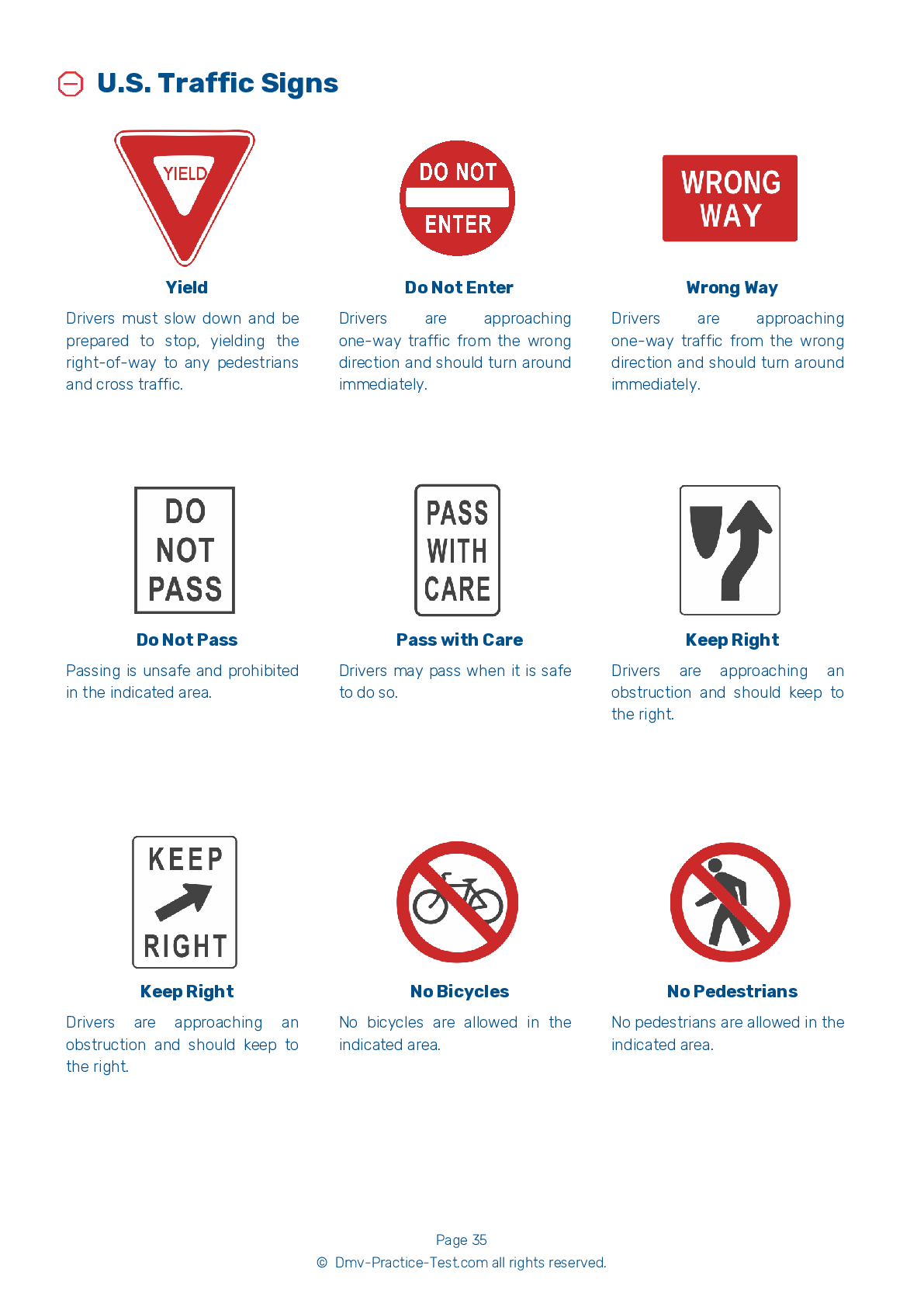FREE Vermont DMV Practice Test #13 Page 3 of 3
The Vermont DMV practise examinations have been updated for January 2025. It includes questions based on the Vermont Driver Handbook's most significant traffic signals and legislation for 2025. Use actual questions that are very similar (often identical!) to the DMV driving permit test and driver's licence exam to study for the DMV driving permit test and driver's licence exam.
On the practise exam, each question gets a tip and explanation to help you remember the concepts. The written component of the official Vermont DMV test will include questions about traffic rules, traffic signs, and driving statutes, as well as knowledge from the Driver Handbook.
To obtain a passing grade, you must correctly answer 16 of the 20 questions. Use the practise exam provided by the Vermont Department of Motor Vehicles to help you prepare for your instruction permit or driver's licence.
The DMV exam is available in several languages.
Using any kind of testing assistance will result in an automatic fail, and the DMV may take additional action against your driver's licence, so stay away from it.
14 . A diamond-shaped sign is a:
Warning signs are normally diamond-shaped and yellow, although orange warning signs are used in work areas. Such signs warn that you are approaching a hazardous location or an area where special rules apply.
15 . It is important to be alert to motorcycles because:
Motorcycles are smaller and harder to see than cars. Because of their size, they are easily hidden in a car’s blind spot. It may be difficult to judge your distance to a motorcycle and difficult to tell how fast a motorcycle is moving, so always be alert and extra cautious when near a motorcyclist.
16 . Bicyclists:
Under Vermont law, bicyclists may legally ride on all roads, except in specific locations where they are prohibited (such as on interstate highways). The same traffic rules and regulations that apply to motorized vehicles also apply to bicycles. When turning, bicyclists must signal their intent with the appropriate hand signal.
17 . Which of the following must you obey over the other three?
Directions given by traffic officers take precedence over signs, signals, and pavement markings. People authorized to direct traffic include police officers, fire police, highway work area flag persons, and school crossing persons.
18 . Car drivers should know that large trucks:
A large truck has large blind spots to the front, sides, and rear of the vehicle. Avoid lingering in these areas. Because of their larger size and weight, trucks require more room to maneuver and stop than passenger vehicles.
19 . If you see this sign, you:
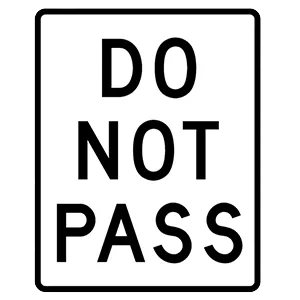
Regulatory signs are white, rectangular signs with black markings. Drivers must obey the instructions posted on all regulatory signs. Where this sign is posted, it is prohibited for drivers to pass one another.
20 . If a crossing guard is directing traffic in a school zone, you must:
Be prepared to reduce your speed and use caution when directed to do so by a sign, crossing guard, or law enforcement officer. Always drive with extra caution in a school zone.
2025 Vermont | Frequently Asked Questions
1. Not checking mirrors and blind spots before changing lanes or turning.
2. Speeding or driving too slowly for the conditions or posted speed limit.
3. Not coming to a complete stop at stop signs or red lights.
4. Incorrect signalling or not signalling at all.
5. Poor parking, especially parallel parking.
Remember, practice makes perfect, so take time to hone your skills.
